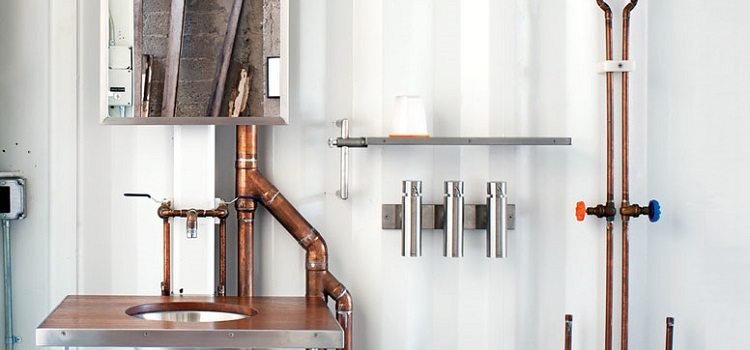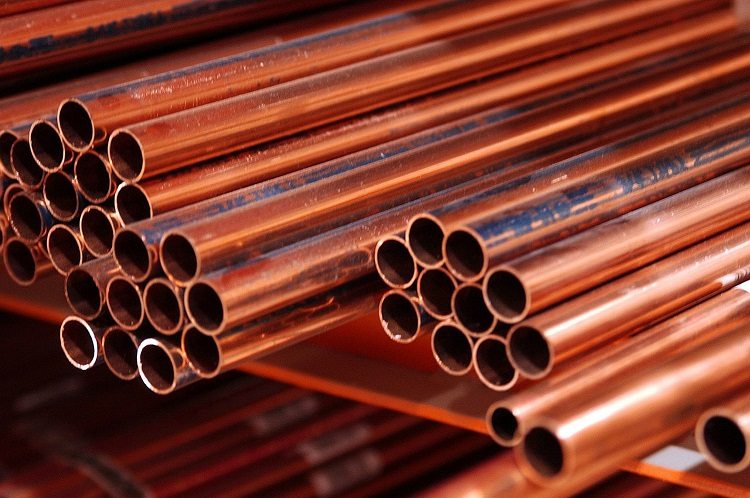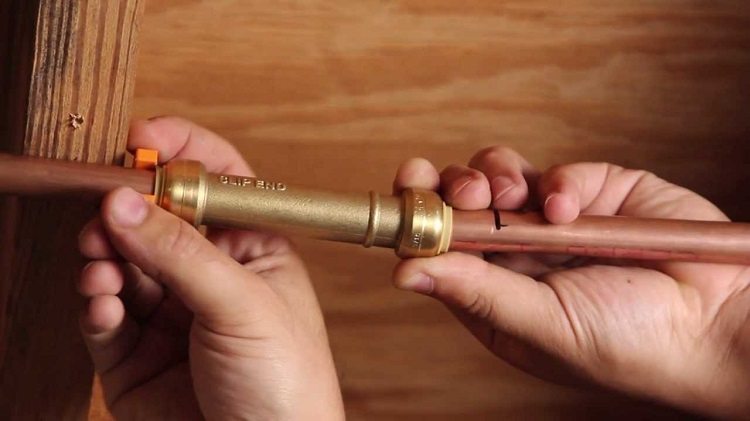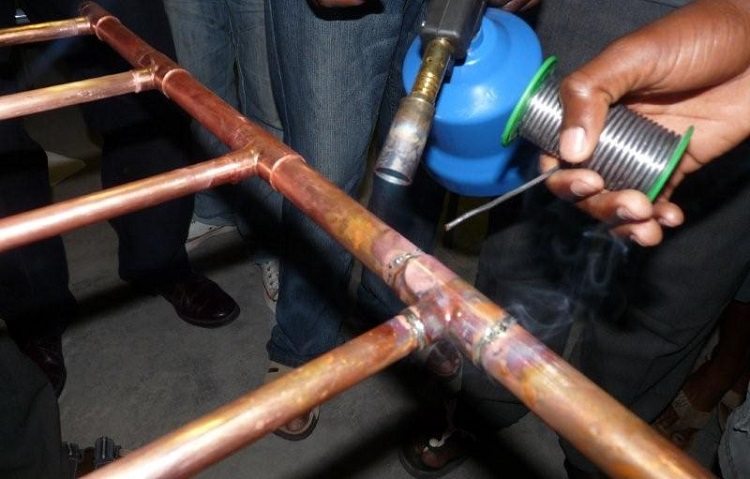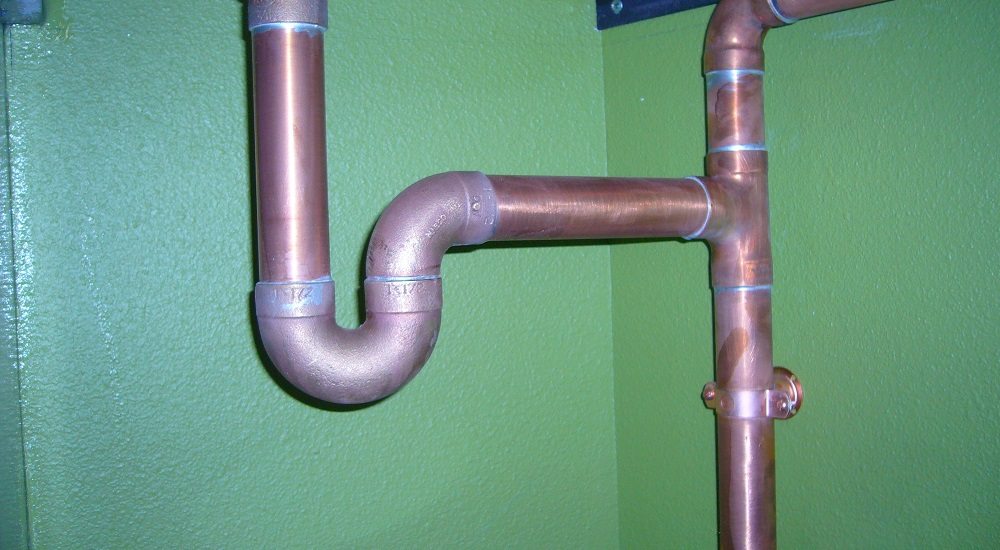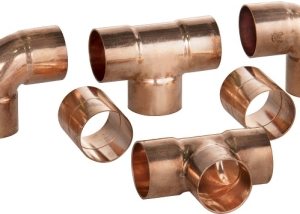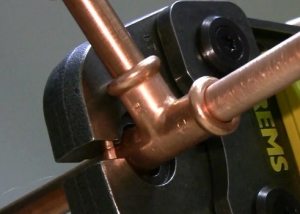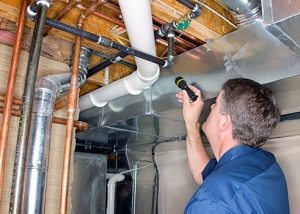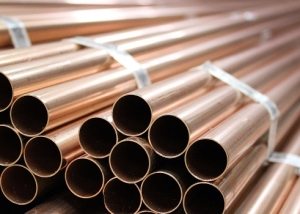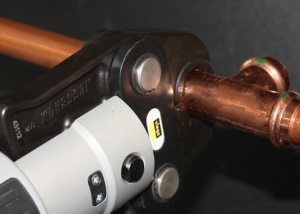There is a lot of debate about the feasibility of creating and operating domestic plumbing from copper pipes. Supporters and opponents voice very good arguments in their favor. However, it is worth taking a closer look at the experience of the “old woman” of Europe - copper water pipes installed in the 70-80s of the last century still work today. This is due to the presence of many advantages in these products.
Content
Advantages and disadvantages of copper products
It is difficult to name the unequivocal reason why copper water pipes were not widely used in us. Indeed, even their high cost against the background of the total cost of repairs in an average city apartment is a drop in the bucket. Probably, the whole thing lies solely in traditions and habits. And it may be because there is a product on the market that is a much more serious competitor to rust-proof steel pipes that are difficult to join and overgrow with slag.
The indisputable advantages of copper pipes for water supply include:
- high resistance to corrosion;
- ability to work in the widest temperature range - from -110 to + 250˚С;
- lack of deposits on the walls of copper elements;
- Long service life combined with minimal installation and maintenance costs.
Indeed, the cost of copper pipes for water supply is relatively high. But this is a one-time cost that will fully pay off as a result of the long and uninterrupted operation of engineering communications.
The main disadvantages are the following factors:
- copper forms a galvanic pair with a number of metals, including steel and aluminum. If even a weak current flows at the junction of the copper pipe with the thread, serious problems will appear;
- high copper conductivity can cause electric shock. And not even out of their own indiscretion. This can happen if the neighbors of the washing machine break down, resulting in a breakdown between grounding to the water supply and the phase;
- relatively time-consuming installation. The connection using fittings equipped with crimp rings does not differ in complexity from this operation with metal-plastic products, but you will have to make a little more effort. For soldering copper water pipes You will need a special tool (at least a blowtorch), solder, flux and, of course, certain skills.
Important! Do not ground to metal the pipe any electrical appliances. Spend some time and run a special ground wire from the switchboard housing. So it will be safer.
Specifications
One of the most important parameters of water supply systems is the diameter of the pipes. It is this indicator that determines the throughput of the water supply. A pipe with a small diameter can cause malfunctioning of plumbing fixtures due to increased pressure, while installing a pipe with a large diameter is sometimes not rational due to additional optional financial costs.
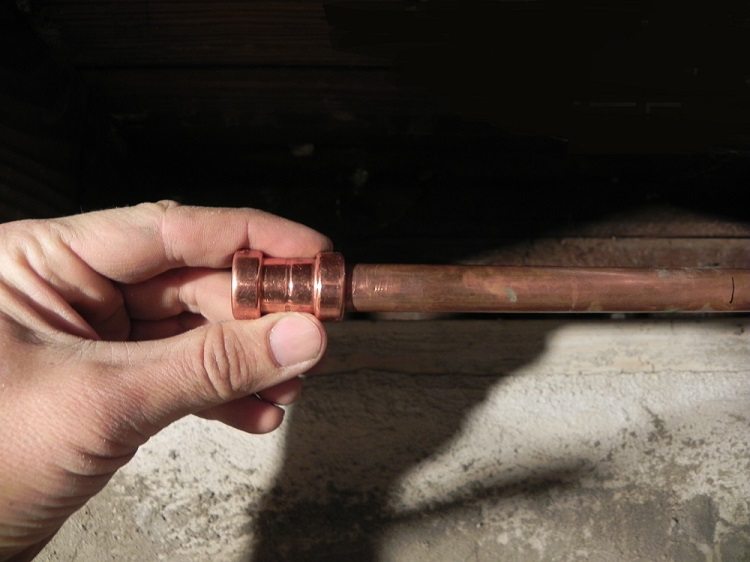
The diameter of the pipe is an important indicator on which the stable operation of the future water supply depends
The range of sizes of copper water pipes produced by modern industry is presented in the table below.
Table 1
| Outer diameter D.N., mm | Nominal bore, DN, mm | Weight 1 meter pipe, kg | Pipe wall thickness, millimeters | ||||
| Ordinary | Lungs | Reinforced | Ordinary | Lungs | Reinforced | ||
| 165,0 | 150,0 | 17,810 | 15,880 | 21,630 | 4,50 | 4,0 | 5,50 |
| 140,0 | 125,0 | 15,040 | 13,420 | 18,240 | 4,50 | 4,0 | 5,50 |
| 114,0 | 100,0 | 12,150 | 10,850 | 13,440 | 4,5 | 4,0 | 5,0 |
| 101,3 | 90,0 | 9,60 | 8,440 | 10,740 | 4,0 | 3,50 | 4,50 |
| 88,5 | 80,0 | 8,340 | 7,340 | 9,320 | 4,0 | 3,5 | 4,50 |
| 75,5 | 65,0 | 7,05 | 5,710 | 7,880 | 4,0 | 3,20 | 4,5 |
| 60,0 | 50,0 | 4,880 | 4,220 | 6,160 | 3,50 | 3,0 | 4,50 |
| 48,0 | 40,0 | 3,840 | 3,330 | 4,340 | 3,5 | 3,0 | 4,0 |
| 42,30 | 32,0 | 3,09 | 2,730 | 3,780 | 3,20 | 2,80 | 4,0 |
| 33,50 | 25,0 | 2,390 | 2,120 | 2,910 | 3,20 | 2,80 | 4,0 |
| 26,8 | 20,0 | 1,660 | 1,50 | 1,850 | 2,80 | 2,50 | 3,20 |
| 21,3 | 15,0 | 1,280 | 1,160 | 1,430 | 2,80 | 2,50 | 3,20 |
| 17,0 | 10,0 | 0,80 | 0,740 | 0,980 | 2,20 | 2,0 | 2,80 |
| 13,5 | 8,0 | 0,610 | 0,570 | 0,740 | 2,20 | 2,0 | 2,80 |
| 10,2 | 6,0 | 0,40 | 0,370 | 0,470 | 2,0 | 1,8 | 2,50 |
The diameter of the pipes should be the larger, the more plumbing fixtures are connected to the water supply. For hot and cold water supply, it is possible to purchase products with the same value of this parameter, but the wall thickness of the hot pipes should be significantly, at least an order of magnitude, greater.
Installation of water pipes from copper pipes
There are two ways to install these products: by soldering or threaded connection using crimp rings. Soldering can be low and high temperature. The first type is more preferable, since copper loses its hardness with strong heating.
To complete this procedure with both methods, you will need:
- a hacksaw for metal or a pipe cutter;
- pliers;
- manual calibrator;
- file;
- spanners;
- fine sandpaper;
- fitting;
- FUM tape.
Threaded connection of copper pipes for water supply
Installation in this way is quite simple, so even a beginner can perform it. Before you start work, make a diagram of the future water supply system and on its basis calculate the required footage of pipe products.
Advice! If you have never before been involved in the installation of a water supply system, it will be useful to stock up on additional meters of copper pipes.
Connect in the following sequence:
- Cut the required pipe size.
- If a copper pipe with PVC insulation is used for water, be sure to remove this layer at the end of the product.
- Using a file, remove any burrs after cutting.
- Chamfer.
- First, put a union nut on the prepared pipe, then a crimp ring.
- Fit the fitting to the nut and tighten the threaded connection. Do this first with your hand very smoothly, and then tighten with a key. As a result of the gradual crimping of the pipe ring, a tight joint is formed.
- If you are connecting a transition fitting to a copper pipe from a steel one, use a mounting paint kit or FUM tape to tightly seal the joint.
Soldering copper water pipes
This is a more reliable method, however, for its implementation it is necessary to have certain skills and comply with safety requirements.
Soldering involves the following actions:
- With a pipe cutter or a hacksaw for metal, cut the required piece of pipe.
- Remove thermal insulation at its end, if any.
- Remove any burrs.
- Using a sandpaper, remove the oxide film from the soldering point.
- Sand the fitting.
- Remove dust from parts with a dry cloth.
- Apply flux to the surface of the pipe. Then the solder will spread evenly.
- Insert the end of the pipe into the fitting so that the gap between the parts does not exceed 0.4 mm.
- Take gas burner for brazing copper pipes and warm the place of the future connection. You can do this with a blowtorch. Move the flame along the seam evenly, avoiding overheating of any pipe section.
- Insert the solder into the gap formed after introducing the copper pipe into the fitting and solder the seam.
- After water supply installationso that no particles of flux remain in the system, wash it well.
One trend cannot be ignored regarding copper pipes. It consists in the fact that the owners of elite suburban cottages or premium apartments in modern new buildings use these products not only for water supply pipelines, but also in sewage disposal systems. And indeed, in housing in this category, everything should be at the highest level, even sewage. Moreover, the characteristics of copper pipes allow this to be done without compromising the quality of work of such a system.
If you plan to use these products to connect to the sewage system of various household plumbing, when buying copper pipes and installing them, refer to the data from table No. 2, which indicates the connection parameters of household water consuming devices to the drainage system.
table 2
| Device | Diameter of pipes of the drain system, mm | The distance between the siphon and the central drain without ventilation, mm | Slope |
| Shower, bathtub, sink, combination drain | 50 | 170-230 | 1:48 |
| Washing | 30-40 | 130-150 | 1:36 |
| Sink | 40 | 0-80 | 1:12 |
| Bidet | 30-40 | 70-100 | 1:20 |
| Toilet bowl | 100 | up to 600 | 1:20 |
| Shower | 40 | 150-170 | 1:48 |
| Bath | 40 | 100-130 | 1:30 |
note! Replacing the existing cast-iron sewer riser with a copper one is not economically feasible. We are talking about such tubular products as bends, chrome liners from mixers, elbows, etc.
Opportunity bend copper pipe for water supply at various angles allows you to minimize the number of joints. This factor is not only a guarantee of reliability, but also improves the appearance of engineering communications. To perform this procedure, you will need a special pipe bender, which you can work without pre-heating the pipe. A heated pipe should be bent using springs. This technology preserves the cross section of the workpiece.
Any owner wants to have reliable and uninterruptedly functioning communications in his house. And if you want to decorate your home with a stylish decorative element that fulfills the function of a full-fledged water supply system, opt for a copper water pipe.
